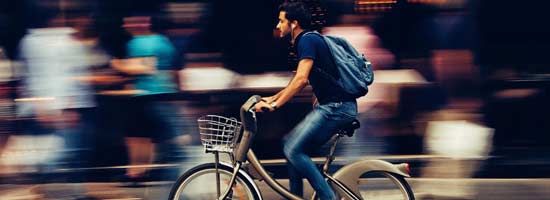
4 Bad Cycling Habits That Could Be Hurting Your Knees
Cycling is a great way to maintain your flexibility and work your anterior (front) and posterior (back) leg muscles. It’s also a low-impact form of exercise that’s often gentle on your joints. However, the repetitive motions required for cycling can be hard on your knees – especially if any of the following bad cycling habits apply to you.
1. Pushing Yourself Too Hard
It’s fine to have goals if you’re an ardent cyclist. But if it’s been a while since you’ve pedaled for fun or sport, don’t try to set new personal distance records or tackle huge hills and other challenging surfaces. Pace yourself and up your mileage slowly. This will give your knees time to become accustomed to the motions associated with cycling.
2. Using a Seat That’s Not Adjusted Right
You’ll be more likely to injury your knee joint or its attached ligaments, tendons, and muscles if you go cycling without checking your seat (or saddle). If the front of your knees hurt as you pedal, try lifting the seat a bit. But if the back of your knee is where you feel pain, lower the seat a bit or move it slightly forward until your knees move forward over the ball of your foot when your legs are at 3 and 9 o’clock.
3. Not Using Your Gears to Lighten Your Load
If you ride at a low cadence somewhere within the 60 to 75 rpm range, each pedal stroke will place added stress on your patella (kneecap). Use your gears to your advantage instead and lower your load by boosting your cadence to 80 rpm or greater. Spinning faster in lower gears has also been shown to help with endurance.
4. Having Poorly Conditioned Core Muscles
Cycling involves more than the muscles in your legs and the bones and soft tissues in your knees. In one study involving cyclists, more stress was placed on knees when weak core muscles increased riders’ side-to-side leg motions. When not on your bike, ease pressure on your knees by improving your core muscle strength. Your core includes muscles in your abs, pelvis, hips, buttocks, and lower back.
If you have knee pain related to cycling, ditching the bad habits discussed here might make it less of a distraction. Should your knee pain persist, however, an orthopedic specialist may be able to recommend physical therapy exercises or other treatments that could allow you to enjoy cycling again without distracting knee pain.
